I use geom_tile() together with geom_text from ggplot2 to generate basically a table:
Two factors (X and Y) are plotted on the x-axis (resulting in two columns of tiles). Levels of factor Y are nested within factor X. Therefore, multiple identical tiles for factor X are plotted (one per level of factor Y). Is there a way to "merge" the tiles of factor X to larger tiles with the text occurring only once per tile? I am also open for approaches using other functions than geom_tile() to achieve this.
The result should look like this:
Here is my code:
library(ggplot2)
dat <- data.frame(id = c(1:4, 1:4),
factor = c(rep("X", times = 4), rep("Y", times = 4)),
value = c("A", "A", "B", "B", "C", "D", "E", "F"))
ggplot(dat, aes(y = id, x = factor)) +
geom_tile(color = "black", fill = NA) +
geom_text(aes(label = value))
y = id must be preserved.
Edit 1
In my actual data id is a factor:
dat <- data.frame(id = factor(c("n1", "n2", "n3", "n4", "n1", "n2", "n3", "n4")),
factor = c(rep("X", times = 4), rep("Y", times = 4)),
value = c("A", "A", "B", "B", "C", "D", "E", "F"))
Edit 2
A reprex that produces the problem of multiple "merged" cells per level of factor with code provided by Allan Cameron:
dat <- data.frame(id = factor(c("n1", "n2", "n3", "n4", "n1", "n2", "n3", "n4")),
factor = rep(c('X', 'Y'), each = 4),
value = c('A', 'C', 'B', 'C', 'D', 'E', 'F', 'G'))
dat %>%
mutate(id = as.numeric(factor(id))) %>%
group_by(factor) %>%
mutate(chunk = data.table::rleid(value)) %>%
group_by(factor, chunk, value) %>%
summarise(y = n()) %>%
group_by(factor) %>%
mutate(height = y) %>%
mutate(y = (cumsum(y) + cumsum(lag(y, 1, 0)))/2 + 0.5) %>%
ggplot(aes(y = y, x = factor)) +
geom_tile(aes(height = height), color = "black", fill = NA) +
geom_text(aes(label = value)) +
scale_y_continuous('id', breaks = seq_along(unique(dat$id)),
labels = levels(factor(dat$id)))
Output:
The rows containing "C" should be merged for each factor.
Edit 3
A subset of my real data:
dat <- structure(list(id = structure(c(3L, 4L, 5L, 6L, 1L, 7L, 2L, 8L,
3L, 4L, 5L, 6L, 1L, 7L, 2L, 8L,
3L, 4L, 5L, 6L, 1L, 7L, 2L, 8L),
levels = c("n374", "n673", "n139", "n2015",
"n344", "n36", "n467", "n76"),
class = "factor"),
factor = structure(c(1L,1L, 1L, 1L, 1L, 1L, 1L, 1L,
2L, 2L, 2L, 2L, 2L, 2L, 2L, 2L,
3L, 3L,3L, 3L, 3L, 3L, 3L, 3L),
levels = c("phylum", "class", "genus"),
class = "factor"),
value = c("Proteobacteria", "Proteobacteria",
"Proteobacteria", "Proteobacteria",
"Bacteroidetes", "Proteobacteria",
"Bacteroidetes", "Proteobacteria",
"Alphaproteobacteria", "Betaproteobacteria",
"Alphaproteobacteria", "Alphaproteobacteria",
"Cytophagia", "Betaproteobacteria",
"Chitinophagia", "Betaproteobacteria",
"Sphingomonas", "Aquabacterium",
"Dongia", "Sphingomonas", "Chryseolinea",
"unidentified", "unidentified","Sphaerotilus")),
row.names = c(NA, -24L),
class = c("tbl_df", "tbl", "data.frame"))
This produces the following output with the code from the EDIT by Allan Cameron:
[![enter image description here][2]][2]
What I want:
- For factor phylum: The two areas for Proteobacteria should be merged.
- For factor class: The two areas for Betaproteabacteria should be merged.
- For factor genus: The two areas for Sphingomonas should be merged.
- For factor genus: The two areas for "unidentified" should not be merged, since thy are nested in different levels of factor phylum and class.
Edit 4
The latest code by Allan Cameron still causes "lower level" tiles to merge when they were not nested in the same "higher level" tile. This affects the value "unidentified":
This can be reproduced with the following data:
dat <- structure(list(id = structure(c(3L, 4L, 5L, 1L, 6L, 2L,
3L, 4L, 5L, 1L, 6L, 2L,
3L, 4L, 5L, 1L, 6L, 2L),
levels = c("OTU_374", "OTU_673", "OTU_139",
"OTU_344", "OTU_36", "OTU_467"),
class = "factor"),
factor = structure(c(1L, 1L, 1L, 1L, 1L, 1L, 2L, 2L, 2L,
2L, 2L, 2L, 3L, 3L, 3L, 3L, 3L, 3L),
levels = c("phylum", "class", "genus"),
class = "factor"),
value = c("Proteobacteria", "Proteobacteria",
"Proteobacteria", "Bacteroidetes",
"Proteobacteria", "Bacteroidetes",
"Alphaproteobacteria", "Alphaproteobacteria",
"Alphaproteobacteria", "Cytophagia",
"Betaproteobacteria", "Chitinophagia",
"Sphingomonas", "unidentified", "Sphingomonas",
"Chryseolinea", "unidentified", "unidentified")),
row.names = c(NA, -18L),
class = c("tbl_df", "tbl", "data.frame"))
"Lower level" tiles should not merge, if they were already separated by a "higher level" tile.






